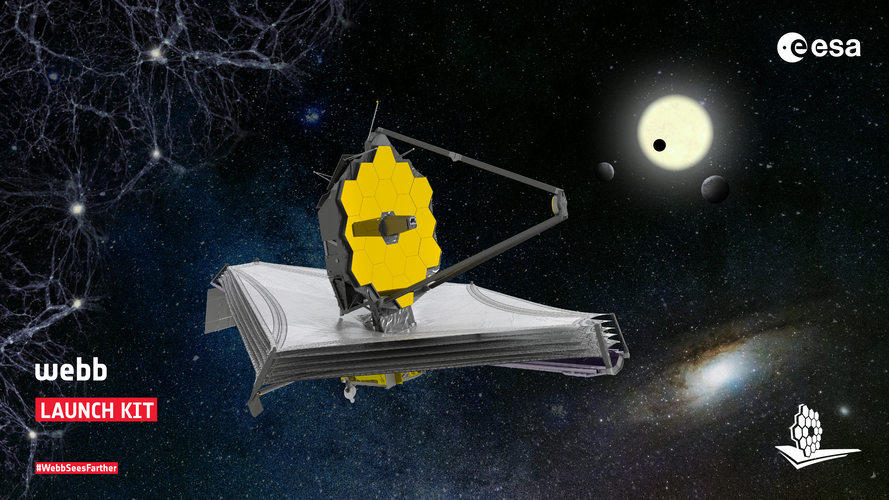
Copernical Team
How were the carbon contents in terrestrial and lunar mantles established
 According to the theory of planet formation, rocky bodies such as the Earth were formed by repeating collisions from dusty materials. In this process, a number of Mercury- or Mars-sized planetary embryos, were formed, and eventually these bodies merged together and formed terrestrial planets in our solar system.
During the formation of the planetary embryos, the interior of these bodies wa
According to the theory of planet formation, rocky bodies such as the Earth were formed by repeating collisions from dusty materials. In this process, a number of Mercury- or Mars-sized planetary embryos, were formed, and eventually these bodies merged together and formed terrestrial planets in our solar system.
During the formation of the planetary embryos, the interior of these bodies wa GMV supplies operations centre for the new generation of Yahsat satellites
 GMV , the world's number one supplier of satellite control systems, has signed a new contract with the UAE-based Al Yah Satellite Communications Company (Yahsat) to supply the control centre and flight dynamics system for the operator's sixth satellite - Thuraya 4NGS, a next generation L-band system slated for operations in 2024.
Thuraya 4-NGS will lead the continued advancement of Yahsat'
GMV , the world's number one supplier of satellite control systems, has signed a new contract with the UAE-based Al Yah Satellite Communications Company (Yahsat) to supply the control centre and flight dynamics system for the operator's sixth satellite - Thuraya 4NGS, a next generation L-band system slated for operations in 2024.
Thuraya 4-NGS will lead the continued advancement of Yahsat' Spacewalks planned for Shenzhou missions
 Astronauts on the upcoming Shenzhou XII mission will engage in spacewalks outside the Tianhe core module of China's Tiangong space station, a key figure in the nation's manned space endeavor said.
Yang Liwei, the first Chinese in space and now deputy chief planner of the country's manned space program, told China Central Television on Sunday in Wenchang, Hainan province, that during their
Astronauts on the upcoming Shenzhou XII mission will engage in spacewalks outside the Tianhe core module of China's Tiangong space station, a key figure in the nation's manned space endeavor said.
Yang Liwei, the first Chinese in space and now deputy chief planner of the country's manned space program, told China Central Television on Sunday in Wenchang, Hainan province, that during their Tianzhou 2 docks with China's new station core module
 Tianzhou 2, a cargo spacecraft launched on Saturday evening, docked with Tianhe-the recently deployed core module of the country's permanent space station-early on Sunday morning, according to the China Manned Space Agency.
The Long March 7 rocket, carrying Tianzhou 2, blasted off from the Wenchang Spacecraft Launch Site on the coast of the southern island province of Hainan at 8:55 pm Sat
Tianzhou 2, a cargo spacecraft launched on Saturday evening, docked with Tianhe-the recently deployed core module of the country's permanent space station-early on Sunday morning, according to the China Manned Space Agency.
The Long March 7 rocket, carrying Tianzhou 2, blasted off from the Wenchang Spacecraft Launch Site on the coast of the southern island province of Hainan at 8:55 pm Sat AFRL Materials Characterization Facility pushes state of the art
 The Air Force Research Laboratory has recently renovated their materials characterization facility (MCF) to meet the ever-advancing needs of materials research. By renovating 3,700 square feet of existing laboratory space, the facility has been designed to keep pace with analytical research technology, thereby "future-proofing" it for the next generation of instrumentation, according to program
The Air Force Research Laboratory has recently renovated their materials characterization facility (MCF) to meet the ever-advancing needs of materials research. By renovating 3,700 square feet of existing laboratory space, the facility has been designed to keep pace with analytical research technology, thereby "future-proofing" it for the next generation of instrumentation, according to program California prepares for more West Coast space launches
 The state of California and Vandenberg Space Force Base are planning and building new infrastructure to capture more of the growing commercial space launch business.
Vandenberg has never been as busy as the primary U.S. spaceports in Florida - Kennedy Space Center and Cape Canaveral Space Force Station. But now SpaceX and several other launch companies plan to increase activity on the
The state of California and Vandenberg Space Force Base are planning and building new infrastructure to capture more of the growing commercial space launch business.
Vandenberg has never been as busy as the primary U.S. spaceports in Florida - Kennedy Space Center and Cape Canaveral Space Force Station. But now SpaceX and several other launch companies plan to increase activity on the James Webb Space Telescope launch kit

Download this launch kit to learn more about the international James Webb Space Telescope and the science goals of the mission.
Lithuania joins Global Space Markets Challenge

Eligible companies from Lithuania can now submit applications to ESA’s Global Space Markets Challenge. The competition’s application deadline for all participants has been extended to 30 June 2021 (23:59 CEST).
Week in images: 24 - 28 May 2021

Week in images: 24 - 28 May 2021
Discover our week through the lens
ASKAP takes a first glimpse at the galactic plane

With the findings detailed in two Monthly Notices of the Royal Astronomical Society papers, a group of astronomers, led by the Italian National Institute of Astrophysics (INAF) and Macquarie University, reported the first radio observations toward the galactic plane using the Australian SKA Pathfinder (ASKAP), developed and managed by CSIRO—Australia's national science agency. The region mapped by the researchers includes the entire area of the Stellar Continuum Originating from Radio Physics In Ourgalaxy (SCORPIO) survey, one of the exploration projects of the Evolutionary Map of the Universe (EMU) program, which will use the new ASKAP telescope to make a census of radio sources of the whole southern hemisphere.
As part of the preliminary activities for the EMU project, radio astronomers pointed the ASKAP's antennas in the direction of the Scorpion's tail. At the time observations were carried out, the interferometer wasn't yet fully deployed (15 of the 36 antennas were then operational), and these were used to image an area of about 40 square degrees. The so-called SCORPIO field was included among the first scientific targets of ASKAP, thanks to preliminary work conducted by the Italian team using the Australia Telescope Compact Array (ATCA).
